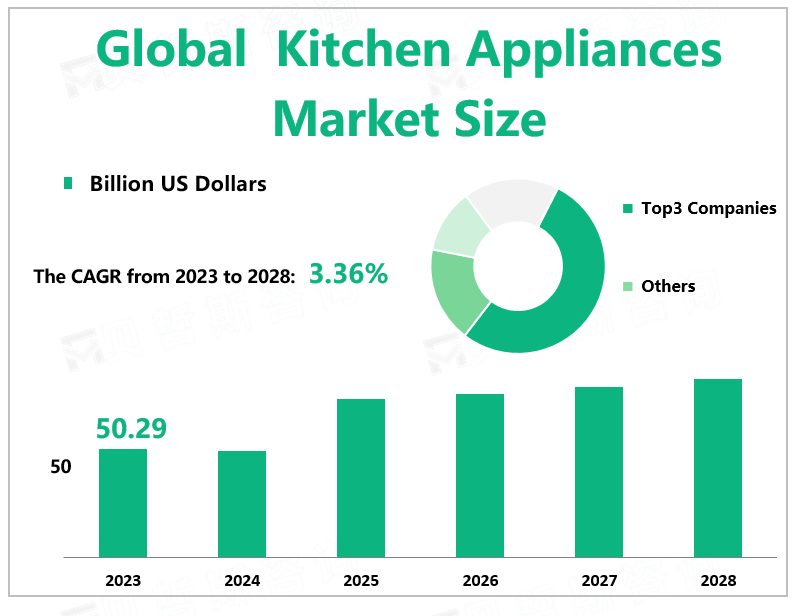Global Kitchen Appliances Market Overview
According to Global Market Monitor, the global kitchen appliances market size was $50.29 billion in 2023 with a CAGR of 3.36% from 2023 to 2028.Kitchen appliances include dishwashers, freezers, refrigerators, kitchen stoves, water heaters, trash compactors, microwave ovens, and induction cookers.
Kitchen Appliances Market Trends
As for product intellectualization, with the emergence of concepts such as "Internet +" and "Internet of things", the functions of kitchen appliances are constantly enriched, and the level of human-machine interaction is constantly improving. Many intelligent technologies, such as timing reminders, WIFI functions, and remote control, have been applied in kitchen electrical appliances one after another, which greatly improves the experience of consumers. In the future, with the progress of science and technology, consumers’ demand for high-end and intelligent kitchen appliances will be further enhanced. The development direction includes human-computer interaction such as voice recognition instructions, Internet technology applications such as video entertainment, recipe teaching, community environment, Internet of Things technology applications such as real-time tracking, cloud services, and automatic repairs—intelligent household appliances such as intelligent integration of household appliances, real-time online operation of APP, etc.

Market SWOT Analysis
Online shopping has greatly expanded sales channels. The development of the global Internet and logistics industry has contributed to the explosion of online sales. In 2023, retail e-commerce sales worldwide amounted to $8 trillion. Online shopping is one of the most popular online activities worldwide. Small household appliances have the characteristics of small size without installation, relatively low unit price, simple product functions, etc., and online development is more advantageous.
It is difficult for new entrants to master mature and stable product development technology in a short period, and it is difficult for them to reach a high level of production and manufacturing in a short period. The industry has certain qualification barriers, and it is difficult for new entrants in the industry to obtain qualification recognition from large terminal product manufacturers in a short period. The intelligent electronic control industry is a capital-intensive industry. New entrants need to have strong financial strength, and new entrants that have not yet formed a scale are difficult to be recognized by high-quality customers, obtain more business opportunities, and face high-scale barriers.
|
S |
Economic development and per capita disposable income increase Improvement of people's quality of life Development of smart devices |
|
W |
Slowing economic growth High product prices |
|
O |
Product innovation and development Increase product distributors Cooperation with smart device manufacturers |
|
T |
Increased market competition Rising labor costs |
We provide more professional and intelligent market reports to complement your business decisions.